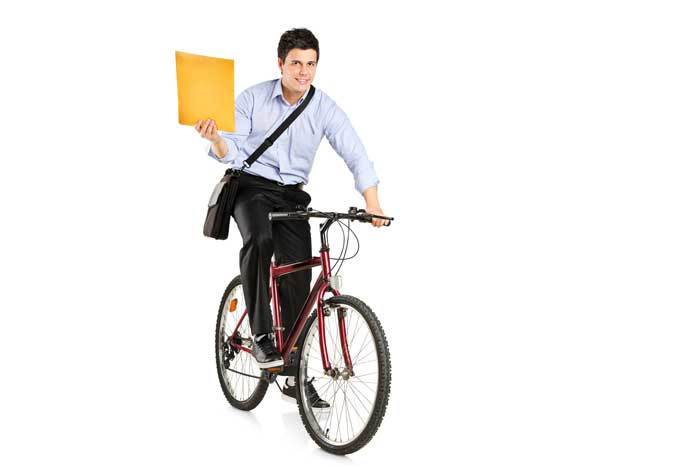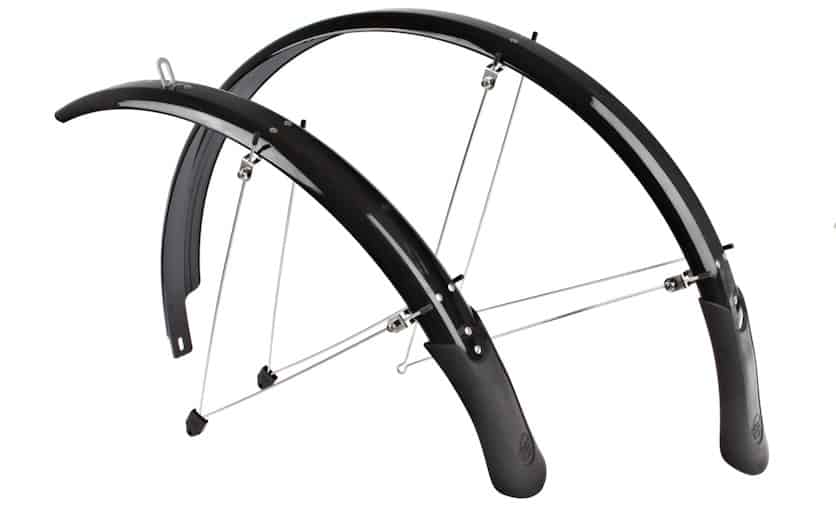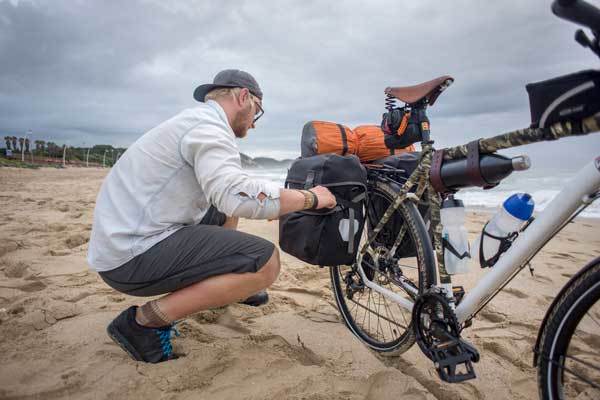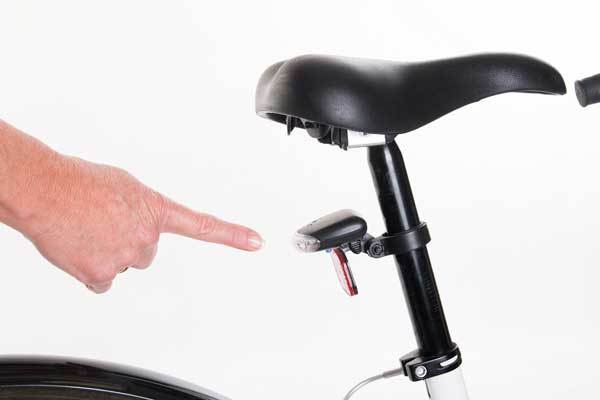Upgrades to Convert your existing Bike into a Commuter bike

What is the best bike for commuting to work?
The bike you already own! While there are bikes designed specifically for commuters, nearly any bike – from road bikes to mountain bikes – can be used to commute.
Plus, with a few modifications, it is easy to make your bike comparable to the best commuter bikes on the road today so that it is easier, faster, and more comfortable for you to bike to work in any conditions.
Upgrades to Make your existing bike Commuter worthy
What upgrades are worth the cost? Here we’ll cover eight upgrades you can make to your existing bike to transform it into a road-worthy commuter.
Take It to the Bike Shop
Chances are, the bike you’re now planning on using for commuting has either been sitting around in your garage for years without much care or has been used heavily for riding on roads or trails.

Either way, it’s a good idea to take it to the local bike shop to have their mechanics give it a once-over. This checkup can catch everything from worn-out chains, brake pads, and cables to any potentially dangerous issues with the frame.
Most bike shops will also clean out your drivetrain, leaving you with a smoother and faster ride.
Pro Tip:
While you’re at the local bike shop, ask about getting your bike fitted to your body. Just changing the height of the seat and the stance of the pedals can make a huge difference in the efficiency and comfort of your ride, and local experts can help you dial in your stance while riding inside on a bike trainer.
Add Fenders
Commuting to work in the rain doesn’t have to mean that you show up soaking wet – but it almost certainly will if you don’t add some cover over your tires to keep them from spinning water up at you.

If your bike has eyelets pre-drilled into the frame, the best fenders to add are traditional full fenders, which cover the entire top halves of your front and rear tires for the best protection from water and road grit.
However, don’t worry too much if you don’t have these eyelets – most mountain bikes don’t – you can add clip-on hardtails that attach easily to the frame and provide plenty of covers to keep you dry.
Change Out Your Tires
You might not think much about your tires when riding your bike, but choosing the right set of tires for a road commute can make a big difference in your riding comfort and speed.

Although traditional road bike slick tires may be the fastest, they aren’t necessarily the best choice for commuting since they are especially prone to flats and don’t handle well on slick, wet roads.
Instead, opt for thicker hybrid tires that are specifically designed to resist punctures while keeping rolling resistance down, like the Gatorskin tires made by Continental.
Pro Tip:
Make sure that the tires you buy will be compatible with your wheels and the width of your bike frame. Most wheels have their diameter (usually 700c or 26”), and width (usually 20-30mm) listed somewhere on the wheel, although be sure to check with your local bike shop if you’re not sure what size tire you need.
Attach Panniers
Carrying a backpack while biking to work is an option, but not a very comfortable one – having a pack on your back will eventually cause your shoulders to ache and make your back sweaty during the summer months.

If you are committing to bike commuting for the long term, consider adding a rear rack to your bike so that you can carry your items in pannier bags behind your seat and away from your body.
Panniers also have the advantage of being waterproof, so you don’t have to worry about carrying your computer or other delicate items in the rain.
Panniers and racks are often sold as a compatible system since the bags are designed to attach and detach easily, although they can also be bought separately.
Choosing a rack will again depend on whether your bike frame has pre-drilled eyelets. If so, you can opt for a traditional rack that screws into the eyelets and attaches to your rear fork.
If not, you’ll need to find a rack that can clamp directly to your seatpost and may not be able to hold as much weight.
Here is our detailed guide to find the best panniers for commuting
Be Seen
If you’ll be commuting in the early mornings or at night – or could even be stuck later than expected at work one day – it is imperative that you add a set of front and rear lights to your bike.
In general, the more lights you can add to your bike and body, the easier you will be for drivers to see – and thus the safer you will be.

The best commuting bike lights are extremely bright, water resistant for riding in the rain and have long battery lifespans.
Look for a headlight that can illuminate the road in front of you and a rear light that can flash in a pattern that is sure to catch drivers’ attention.
Pro Tip:
Also consider adding glowing or flashing lights to your wheels. These small lights make your bike much easier to see from the sides, where front and rear lights are not as effective. Having side lights can make all the difference in traveling safely through busy intersections at night.
Be Heard
If you’re commuting in a busy city, chances are you won’t be the only one on the road. You also have to plan for other cyclists and pedestrians.
Adding a bell to your handlebars, where it is within easy reach of your hand, allows you to signal to other commuters – for example, that you are coming up behind them and want to pass.
Some cities, such as New York City, require all cyclists to have bells on their bikes because of how much they improve safety among riders.
Upgrade Your Saddle
If you’ve got your bike fitted and are still experience discomfort over your commute, the problem may lie with your saddle.
Chances are, you aren’t wearing traditional bike shorts with a thick chamois pad during your commute so that a hard road saddle will be extremely uncomfortable.

Depending on your budget, there are a few ways to fix your saddle. The cheapest option is to add a gel cover over your existing seat, although this will reduce the efficiency of your pedal stroke because of the wiggle in the seat.
A better option is to invest in a wider, more cushioned saddle that is designed for commuting.
Invest in a Lock
Once you’ve made all these upgrades to your commuter bike, you want to make sure no one is going to steal your bike! The best option for protecting your bike is, if possible, to bring it inside to your workplace with you.

However, this can be a major hassle, and many workplaces won’t allow it.
Instead, invest in a high-quality bike lock. This may be one of the most expensive components you add to your commuter bike since lock prices typically increase sharply with increased quality.
However, having a lock with a guarantee that the manufacturer will replace your bike in the event the lock is cut can make a huge difference in your piece of mind.
Also, the better your lock, the less appealing your bike is to thieves compared to all the other bikes on the same rack.
Pro Tip:
Your lock will only protect your bike frame, not any of the things attached to it. While most people leave their wheels and saddles on the bike unprotected, do remember to remove your nice bike lights and any other accessories that thieves might be interested in stealing. You can also remove your wheels and lock them against the frame if wheel theft is a concern.
With a few upgrades, nearly any bike can be converted in a road-worthy commuter bike that will get you from home to work comfortably and quickly.
Any of these eight upgrades will make a significant difference in your ride, and depending on your budget and commitment to bike commuting you can even make these upgrades piecemeal.

